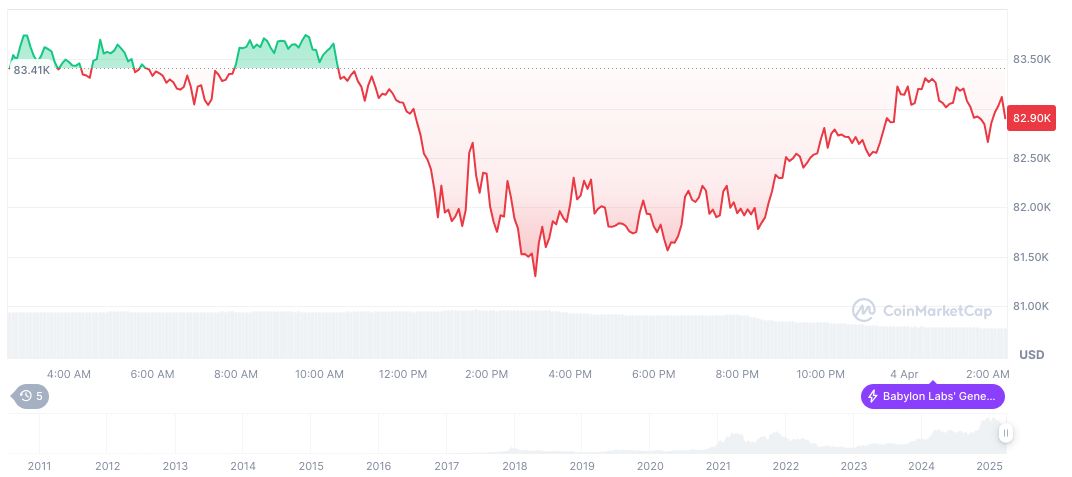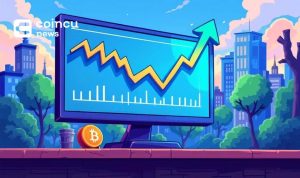- Trump’s tariffs impact global markets, including cryptocurrency declines.
- BTC fell 8% after tariff announcement.
- Tensions heighten as global markets react to U.S. tariffs.
Former President Donald Trump announced a 10% tariff on all imported goods on April 2, 2025, targeting countries with significant trade deficits with the U.S.
The policy sparked major market reactions, including an 8% drop in Bitcoin’s price, reflecting increased economic tension and uncertainty.
Bitcoin Nosedives as Tariffs Spark Market Volatility
Trump’s tariff announcement aimed to address trade imbalances, targeting countries with trade deficits. Bitcoin price plummeted from $88,500 to $81,200, showcasing severe market volatility.
The policy led to massive liquidation events, exceeding $221 million in cryptocurrency losses, emphasizing the shock to financial markets. U.S. stock futures declined, with Nasdaq and S&P 500 showing downtrends, creating apprehension in the options market. Charles Edwards, Capriole Investments’ founder, noted:
“Higher-than-expected US tariffs are shaking investor confidence, with Bitcoin reacting worse than traditional stocks.”
Historical Market Trends Amid New U.S. Tariffs
Did you know? Investor responses to Trump’s tariffs echo the market’s reaction during the 2022 bear period, highlighting Bitcoin’s volatile history in macroeconomic contexts.
Bitcoin, holding a market cap of $1.64 trillion, shows resilience despite a recent 1.04% price bump within 24 hours—as reported on CoinMarketCap. With market dominance at 62.10%, BTC’s current price is $82,826.17. The cryptocurrency’s fluctuating performance includes a 2.68% dip over seven days, further reflecting the volatility since Trump’s announcement.

The Coincu research team anticipates potential easing of market pressure if expected Fed rate cuts occur. Historically, similar market disruptions during U.S. economic shifts have led to speculative rebounds. Monitoring financial and regulatory shifts remains crucial for stakeholders assessing long-term implications.























